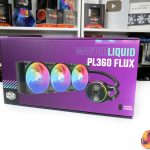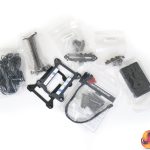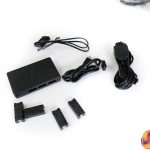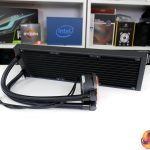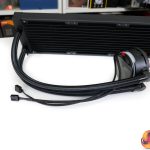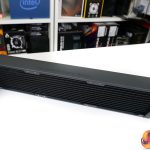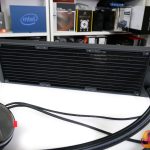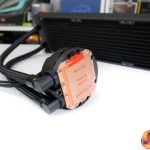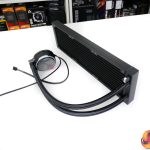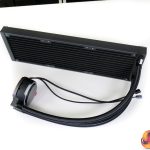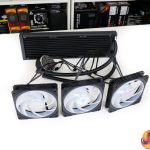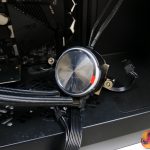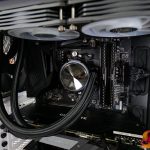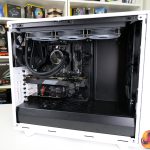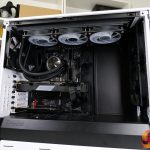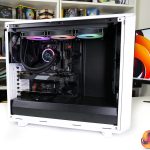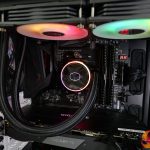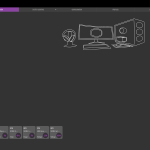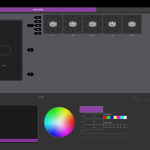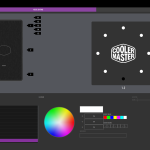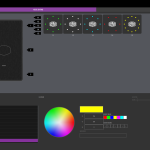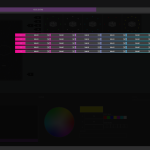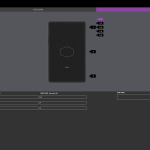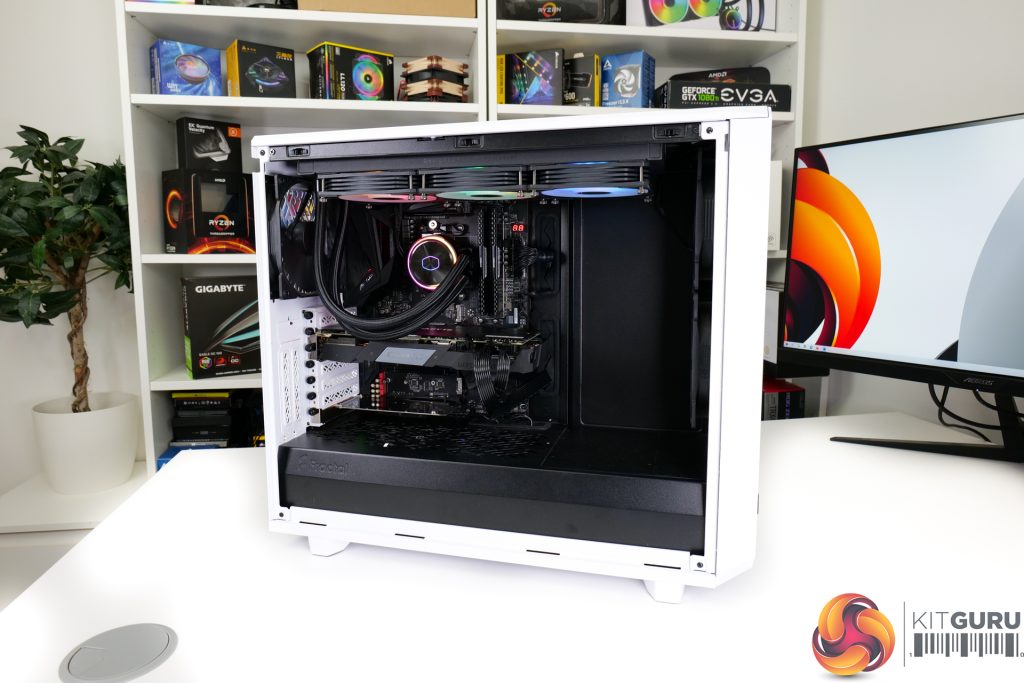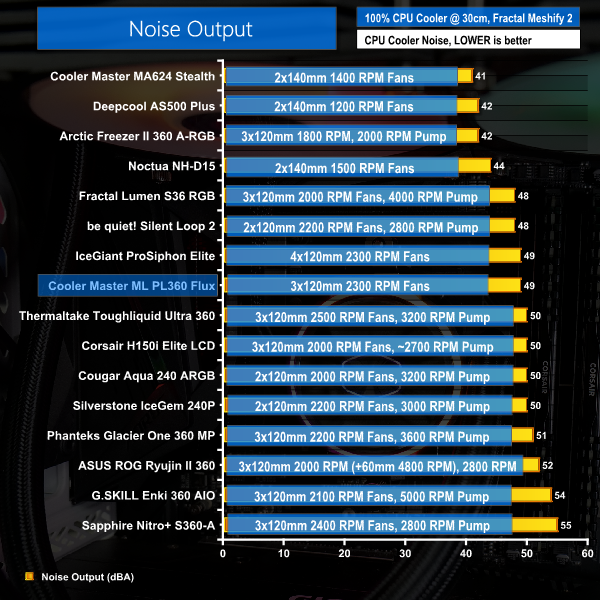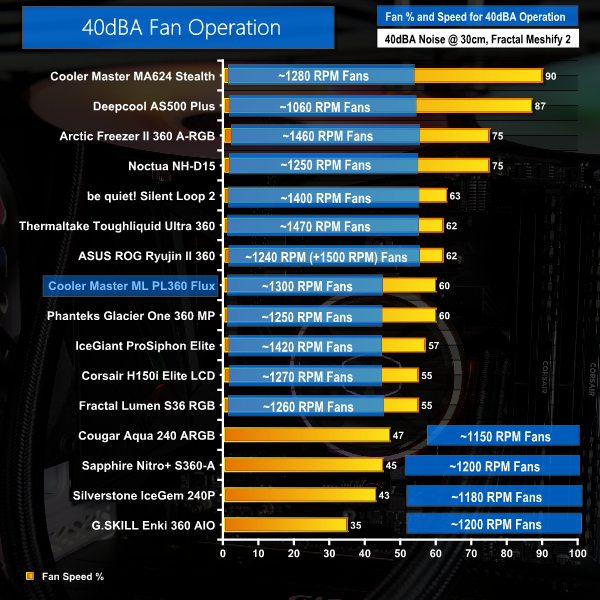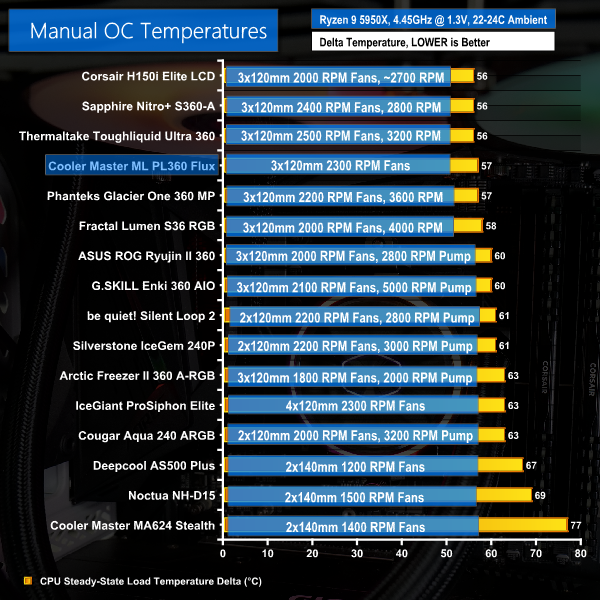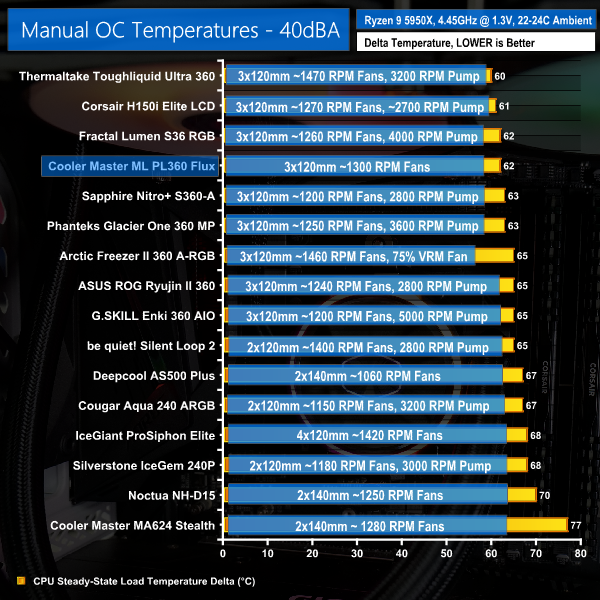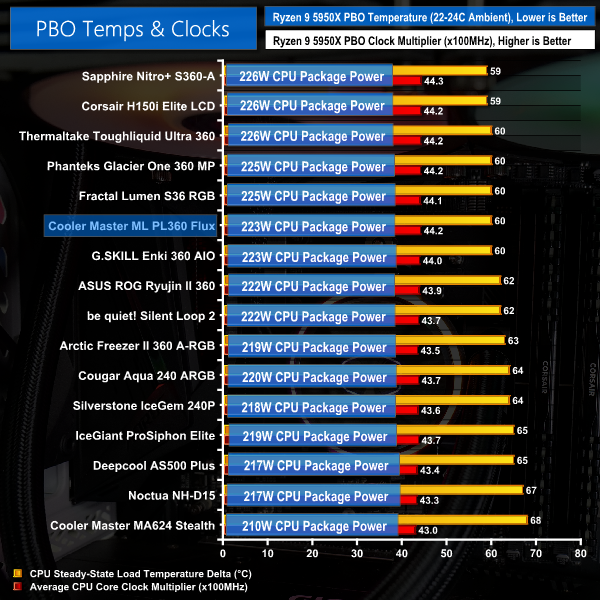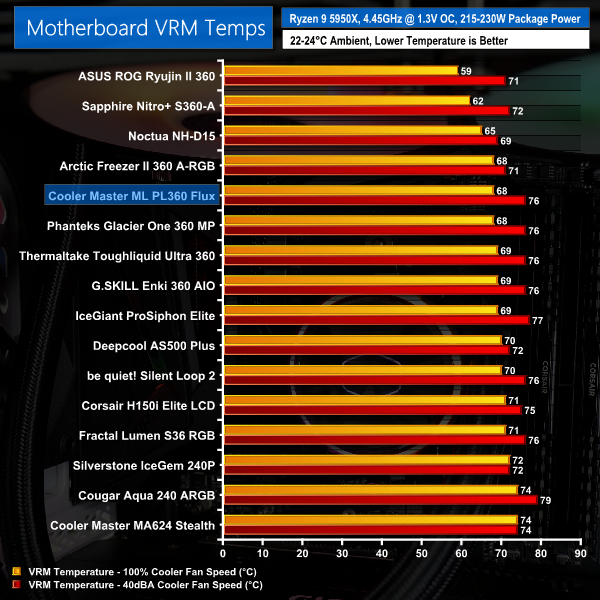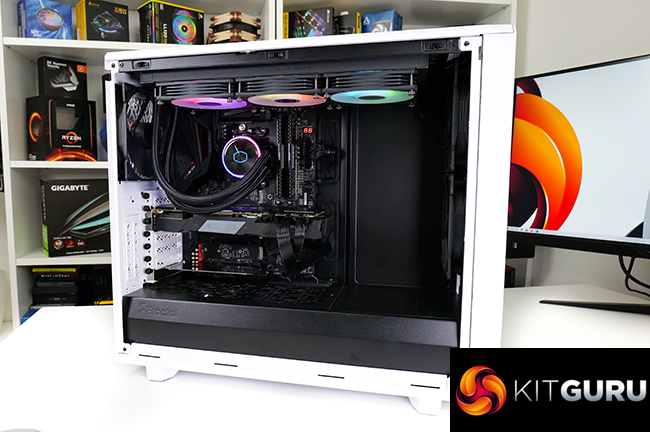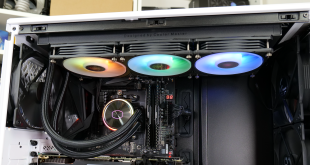
Cooler Master has a new MasterLiquid AIO on the market; the PL360 Flux. With this new model, the company is aiming for the high-end segment for closed-loop liquid cooling units. And it is gunning for that segment with the promise of high performance from its dual-chamber pump, 0 RPM mode on the new Flux series fans, and strong all-round RGB lighting.
The price tag of £179.99 puts the MasterLiquid PL360 Flux firmly into top-tier territory for 360mm AIOs, so let’s see if the overall package can deliver.
Video Timestamps
Cooler Master MasterLiquid PL360 Flux
In terms of accessories, Cooler Master provides mounting hardware and accessories for all modern Intel and AMD platforms, including LGA 1700 and Threadripper. Adapters and cables are supplied for use with the fans as well as the Addressable Gen 2 RGB Controller hub.
I like that Cooler Master provides a tube of thermal paste instead of pre-applying it. This is personal preference that also has maintenance benefits.
Cooler Master uses a conventional 27mm-thick aluminium radiator, albeit with fins that don’t fill out the entire thickness of the radiator housing. As usual, the entire radiator is coloured black for a sleek appearance (and possible thermal benefits). There is a fill/drain port near the tubes, but this is for warranty purposes, not user maintenance. There is also a PL240 Flux 240mm version if the 360 is too big for you.
Looking at the tubes, Cooler Master uses a sleek, braided cover to shroud the underlying hoses. Flexibility is a positive as there is rotational adjustment where the tube connections enter the block. And the tubes themselves also have a good degree of manoeuvrability with respect to creating angles from your chassis mount to CPU heatspreader.
The copper cold plate is tiered in its external form. This is fine as the size of the direct CPU heatspreader contact section is appropriate for most platforms, with the exception of Threadripper. A potential benefit of this tiered cold plate design is that there is simply greater volume for the copper to occupy. This can have the benefit of allowing higher fin surface area within the block design, thus opening the possibility of enhanced heat transfer.
Cooler Master’s dual-chamber pump is 12VDC powered with a consumption rating of 6W. We couldn’t find information on the pump operating speed as our motherboard suggested 9000 RPM and the spec sheet doesn’t confirm anything. We did, however, see some suggestion of around 3300 RPM pump speed in the review guide.
The modestly-sized, 40mm-tall pump unit is quoted as having a MTTF of greater than 210,000 hours. I like that Cooler Master has kept the design sleek, not in-your-face, and reasonably sized. This sleekness does, however, mean that there is no pump-mounted VRM fan, which is a little disappointing given the hefty £180 price tag.
There are two zones of RGB lighting and a reflective top cover which features that Cooler Master logo and can be manually rotated to the correct angle.
Cooler Master does very well to keep the pump-unit cables to a sensible quantity. Just the 4-pin power connection for the pump, as well as the 3-pin ARGB header, are leaving the block unit. This is great for front-side cable management, especially as those cables are also nicely braided.
The trio of 120mm Flux series fans feature interconnecting blades, like we saw from Sapphire’s Nitro+ S360-A competitor. This has the added benefit of strengthening the overall blade structure and thus potentially minimising noise-creating vibrations. The fans are rated at 0-2300 RPM and can actually operate down to 0 RPM, which is good to see, albeit of questionable use on an AIO liquid cooler. Nevertheless, that is a positive speed range especially with the conventional 4-pin PWM connection and control.
ARGB lighting on the fans is handled by a series of LEDs and a braided 3-pin ARGB connector. This is ideal for compatibility with the main RGB software tools from motherboard vendors.
I like the inclusion of rubber pads on each corner of the fans. This has the simple benefit of damping noise-causing vibrations.
With greater than 210,000 hours quoted MTTF for the pump, and greater than 160,000 hours quoted MTTF for the fans, Cooler Master gives the MasterLiquid PL360 Flux a warranty of 5 years. This is solid and is absolutely as we would expect for a £180 AIO liquid cooler.
AM4 installation was clear and straightforward. The default AMD backplate and plastic retention clips are used. This means that the AMD bracket can simply be connected to the pump unit, and then the clips are screwed over the default AMD retention bracket lip.
Other than the process of forcing the clip into position – which is always annoying for the default AMD bracket – the install is easy and quick.
Connecting the fans and cables is a bit more time consuming though, especially as the manual makes it a little difficult of a process to follow. This is simply because there are differing installation approaches. And which approach you choose depends on whether you want the motherboard to have full fan control, if you want the Cooler Master Addressable Gen 2 RGB box to act as a splitter, and how you want to run the RGB management.
Eye-catching RGB lighting is certainly a strength for the MasterLiquid PL360 Flux. I think the styling is smooth, the colours are clear, and the LEDs themselves are bright. I also like that there are a couple of lighting zones added in the pump area, so it’s not just the fans that get lit.
We opted for Cooler Master’s own MasterPlus+ software for RGB control. While certainly not as in-depth as Corsair’s iCUE (what really is?) the CM software seems to do a reasonable job.
You get the ability to set different RGB modes and, more importantly, there is individual control for the several LEDs on the fans or pump cover or Cooler Master logo. That final point is a level of granular control that most motherboard vendor software packages will not offer.
Aside from the relatively simple lighting control, though, the MasterPlus+ software doesn’t really offer much else in the way of useful functionality. So, if you are happy with your motherboard RGB synchronisation tool, I don’t really see the need for you to rush out and install MasterPlus+.
Test System:
- Processor: AMD Ryzen 9 5950X
- Overclocked Settings: 4.45GHz all-core @ 1.312V (UEFI), Medium LLC – around 1.3V delivered
- Motherboard: Gigabyte B550 Aorus Master
- Memory: 32GB (2x16GB) Corsair Vengeance LPX 3600MHz 16-18-18-36 DDR4 @ 1.35V
- Graphics Card: Gigabyte RTX 2060 Super 0dB Mode
- Chassis: Fractal Design Meshify 2
- Chassis Fans: 2x140mm 1000 RPM Fractal Front Intake, 1x140mm 1000 RPM Fractal Rear Exhaust, plus additional 1x140mm 1000 RPM be quiet! Pure Wings 2 Roof Exhaust (for air cooler testing)
- Power Supply: Seasonic Prime TX-1000
- Operating System: Windows 10 Pro 64-bit
Testing Methodology:
- For testing, we use a 30-minute looped run of Cinebench R23 and record the steady-state CPU temperature at the end of the test. This ensures that the CPU has had ample time to warm up and reach steady state under all of the coolers.
- Ambient is maintained around 22-24 degrees Celsius. Where there is variation beyond this temperature range, we add in extra repeated tests to ensure consistency.
- We also test each cooler with at least two fresh installs (typically three) to mitigate the likelihood of a dodgy mount spoiling results.
Test Results:
Acoustics
Let’s start off with noise performance at 100% fan speed. This is important for getting an indication of where our performance expectations should lie based on noise output.
Cooler Master’s noise output numbers are actually quite reasonable and stay below 50dBA at full speed. This is largely thanks to the quality of the Flux series fans used, as the trio’s 2300 RPM maximum operating speed is undeniably high.
Of course, there is also the excellent fan speed control range all the way down to 0 RPM. So, this noise reading is simply a worst-case scenario. And even then, it really isn’t too bad.
In order to get the unit running at 40dBA, we had to reduce the fans down to 60% of their maximum speed when controlled through the motherboard UEFI. We did not change the pump speed.
This 60% duty cycle presented as around 1300 RPM when checked with the UEFI monitor and HWiNFO software.
Thermal Performance
Despite the highly tolerable maximum noise output, the Cooler Master MasterLiquid PL360 Flux doesn’t really look to give up too much in terms of performance.
With a 57C delta temperature in our test system, the PL360 Flux is only a smidgen behind the highest performance contenders in our chart. And all of those coolers were louder than the unit we are examining today.
Keeping well over 200W of overclocked Ryzen 9 5950X power below 80C with a sensible ambient temperature is a very positive result for Cooler Master’s new 360mm AIO.
Despite dropping down to 1300 RPM rotational speed on its three 120mm fans, the Cooler Master MasterLiquid PL360 Flux is able to maintain a promising performance rank in our chart.
Here, some of the notable Asetek competitors from the likes of Sapphire and Phanteks are beaten out. Though that Fractal Lumen S36 RGB presents itself as a formidable competitor, especially with its considerably lower £113 price point. Overall, Cooler Master does well in this 40dBA noise-locked performance test.
Clearly, there is also another 1000 RPM worth of speed available on tap if the cooling performance needs to be ramped up. And that point should not be underestimated when focusing solely on 40dBA thermal results.
PBO results are not quite as positive for the PL360 Flux as the manual overclocked tests are.
Here, Cooler Master’s unit roughly matches many of its 360mm AIO competitors. But there are some alternatives that handle a little more package power or deliver a little high operating frequency.
To be realistic, the margins here are tight and are close to the error levels. With that said, Cooler Master’s performance in this full fan speed test is not quite as promising as many of its other results that we have seen.
MOSFET temperatures are not great, as we would expect from an AIO liquid cooler without a pump-block mounted VRM cooling fan.
At full fan speed, the three 120mm blowers blast their way to a decent VRM temperature result. But the 40dBA noise-locked test shows a better picture for highlighting that incidental VRM cooling is not a strength for the MasterLiquid PL360 Flux. And that point extends to most other 360mm AIO that don’t have specific VRM fans – with Sapphire’s 3x120mm unit being an exception.
Focusing first on operating characteristics, it is clear that Cooler Master has delivered a high-quality all-in-one liquid cooler that has top-tier level performance with its MasterLiquid PL360 Flux. And that is the case without the fans being obnoxiously loud even at full tilt – as well as having superb speed control.
So, there is certainly a lot to like about the MasterLiquid PL360 Flux from a performance perspective. Styling is another strong point, too. The unit itself looks and feels high-quality. The lighting is superb, even if the control software is basic, at best. And the front-side, visible cables are perfectly tolerable thanks to that back-side control unit.
There clearly is plenty to admire here, especially when combined with a solid 5-year warranty. However, pricing is one area which is certainly not as appealing.
£180 in the UK is tough to swallow, especially when that is Corsair H150i Elite Capellix territory with that cooler’s superb iCUE ecosystem. For £180, I’d want Cooler Master to deliver a more in-depth software ecosystem like Corsair offers. Or I’d consider an included VRM fan to be reasonable at this price point. We are well below pump-mounted screen territory, though!
Stiff competition comes from the likes of the Fractal Lumen S36 RGB, or the Arctic Liquid Freezer II 360 A-RGB if you are far more noise-biased. That Fractal cooler is very similar in many respects; quality, sensible speed, RGB fans. Plus, it also offers lighting on the pump-block unit. It is also considerably cheaper at £112.99.
It is easy for us to make comparison against a few really well-balanced coolers from the likes of Fractal or Arctic or Corsair. Doing so will simply see us picking holes in most other coolers on the market. I do, however, think that Cooler Master needs to offer more to justify this price point.
The MasterLiquid PL360 Flux performs well, its noise output is tolerable, and the lighting is very good. It’s just the price that’s a bit high for the overall package on offer. But that’s an easy one for Cooler Master to address, so I’d say that my overall feelings in this review are positive.
The Cooler Master MasterLiquid PL360 Flux has an MSRP of £179.99 in the UK.
Discuss on our Facebook page HERE.
Pros:
- Strong cooling performance
- Positive noise-balanced thermal performance
- Tolerable noise output even at 100% fan speeds
- Good-looking ARGB lighting
- Very good fan speed control range
Cons:
- Expensive at £179.99 in the UK
- Doesn’t quite top our charts, which we would want at the price point
- No added VRM cooling enhancement
KitGuru says: A strong performer with excellent aesthetics and reasonable noise levels. Cooler Master has a good AIO with the MasterLiquid PL360 Flux, but the price is notably high.
Be sure to check out our sponsors store EKWB here
 KitGuru KitGuru.net – Tech News | Hardware News | Hardware Reviews | IOS | Mobile | Gaming | Graphics Cards
KitGuru KitGuru.net – Tech News | Hardware News | Hardware Reviews | IOS | Mobile | Gaming | Graphics Cards


